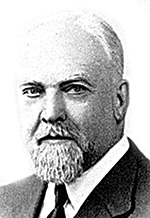 Victor Polterovich
Victor Polterovich
Deputy Director of the Moscow School of Economics, M.V. Lomonosov Moscow State University, Head of Laboratory of the Central Institute for Economics and Mathematics of the Russian Academy of Sciences, Academician of the Russian Academy of Sciences
INSTITUTIONS IMPROVEMENT PROBLEM
There is a question of how to escape the trap of stagnation. A standard recommendation is to improve institutions. This means fighting corruption, reducing the share of the shadow sector, lowering administrative barriers, achieving business transparency, strengthening the ownership rights, etc. In principle, all these goals are worthy of achieving. The trouble is that the success in achieving them depends on mass culture and informal norms. If informal norms do not support reform, any attempts to implement it through coercion and control turn out to be particularly costly.
The continuing vicissitudes of the law No. 94-FZ on public procurement or the unified state examination demonstrate how slim the chances are of improving «institutions» by copying Western mechanisms in a straightforward manner. The «institutional fashion» among the researchers tackling tasks associated with catching-up development, is now a thing of the past. The problems connected with industrial policy, identifying priorities, and stimulating export-oriented growth have come to the fore. On the other hand, the improvement of institutions as discussed above is neither necessary nor sufficient for the success of catching-up development.
Of course, one can argue that the quality of institutions is only one of the factors that influence growth. It’s true. Other important factors include the existence of institutions of a different type, capable of operating with a relatively low level of mass culture.
Let’s compare, for example, the values of the rule of law indicator and the rates of economic growth for the four countries: Belarus, Ukraine, Hungary and Chile for the period 2000-2012.
By the rule of law level, Belarus is the most lagging of these countries, and Chile is the most advanced, but nevertheless the maximum growth rate can be observed in Belarus. Compared to Ukraine, if a longer period of time is chosen, the difference is absolutely fantastic: the Belarusian was four percent richer than the Ukrainian in 1994, and almost twice in 2012. Comparing the quality of institutions and the growth rates of India and China in the postwar period yields a similar conclusion.
CATCH-UP GROWTH INSTITUTIONS
To avoid mistakes in the development of strategies, it is necessary to rely on theory in the broadest sense of the word: abstract «model-based» planning, econometric studies, studies of the experience of successful countries. In each case, we face certain limitations. For example, econometric calculations allow us to formulate plausible hypotheses but not ultimate conclusions since any conclusions based on them are valid «on average» for a particular selection of objects, but not necessarily for each specific object. Moreover, since the success of catching-up development is rare, successful countries often turn out to be outliers. To answer the question of how to carry out reforms it is very important to rely on the experience of those countries. The study of this experience leads to the conclusion that a distinction should be made between competitive market institutions and catch-up growth institutions.
 Pierre Masset
Pierre Masset
Economist, engineer, mathematician General Commissioner for Planning in the Government of De Gaulle
A plan is developed through concerted efforts of representatives of economic and social forces: civil servants, management (agricultural, industrial, commercial), trade unions and workers. This cooperation yields more coherent forecasts and solutions and creates a sense of unity that contributes to the fulfillment of the plan.
CUGI IN BAD INSTITUTIONAL ENVIRONMENT
By initiating and supporting economic growth for some time, they accelerate the evolution of civil culture, creating conditions for improving competitive market institutions, and then gradually lose their significance. CUGI are intended for solving the fundamental task discussed above: the formation, selection and implementation of large-scale modernization projects. In this process, the initiative belongs to the government which follows the principles of corporatism. Corporatism is a system of making political and economic decisions based on the interaction of the state with organizations representing different groups of interests — workers, employers, members of civil society. A wide range of systems are considered corporatist — from the Francoist Spain to Scandinavian countries and Austria during the postwar years.
In the course of interaction mutual distrust is overcome and the likelihood of success of the economic policy increases. In turn, success (economic growth) contributes to the strengthening of trust and changes in civil culture. The role of the state in such systems is gradually decreasing, and a gradual transition to full- fledged democracy is taking place. Indicative planning cannot be regarded as a purely technical aspect of the institutional system. An important role of indicative planning is to organize a dialogue between the state and interested agents.
This function was pointed out by the creator of the first system of indicative planning in France, Pierre Masset.
ECONOMIC MIRACLE INSTITUTIONS
Overcoming mistrust, taking into account paternalistic expectations, achieving consolidation — these were the goals of a number of other institutions which were characteristic of the «economic miracle» countries. Among these goals is the system of lifelong hiring which existed in Japan and a number of other Asian economies and ensured the commitment of the most qualified employees to the firm’s goals. This system was contrary to the idea of free competition in the labor market, but it turned out to be effective in the specific conditions of catching-up economies.
Another non-standard institution is the main bank system which managed to overcome the lack of trust in the credit market. Governments of successful countries maintained a low level of inequality which also contributed to social consolidation. To reduce the possibility of lobbying, the currency exchange rate was used as an important element of industrial policy. By keeping it sufficiently low it was possible to stimulate export-oriented growth. The general development agencies also dealt with the task of consolidation.
Again, to achieve effective trade-offs in the sphere of economic policy, a sufficiently high level of culture is needed. Otherwise there is an endless «tug-of-war» between the Ministry of Economy, the Ministry of Finance and the central bank. It should be emphasized that the existence of a general development agency was a common element of all the «economic miracles».
ON THE PERESTROIKA 3 PROGRAM
It is quite natural to assume that the similarity of intermediate institutions formed in successful countries is due to the similarity of goals and the commonality of technological, institutional and cultural limitations that must be taken into account and overcome. If one is to agree that these limitations are to a significant extent critical for Russia as well, then the above analysis can be used as a basis for a modernization plan for the Russian economy.
I tentatively call this plan «Perestroika 3», meaning that our first restructuring took place after 1917, and the second in 1992. In order to launch sustainable long- term economic growth, a significant change in institutions, i.e. a new perestroika, is required. But, unlike the first two, the third perestroika should not be a shock therapy reform, it can be based on what has already been achieved, especially since a number of the institutions mentioned above already exist, if only in an embryonic state. In particular, our government has issued a number of decrees concerning the system of national planning, which can be relied upon.
Here, however, it is necessary to solve a non-trivial task: to synthesize indicative planning and program budgeting. The regional development agencies and business associations should be involved in the planning process to operate in unison with the society. It is necessary to create a Federal Development Agency to coordinate plans and reforms. We need to complete the national innovation system. From a chaotic set of development institutions that operate without any coordination and sometimes based on wrong assumptions it is necessary to build an effective system that ensures the transfer of technology and the gradual transition to innovative development.
It is also necessary to modernize the management of state property. A classification of missions for state- owned enterprises should be developed. Each state- owned enterprise should have a mission for the current year; upon its completion, a report should be submitted, on the basis of which a decision will be made on whether or not the enterprise’s privatization is appropriate. Every act of privatization of a large enterprise must be accompanied by a substantiation project.
Earlier, in a separate article, I pointed out a number of other areas of institutional reform and economic policy measures that should be included in the program of future reforms. These include forming a modern scientific sector with a network of sectoral research centers; improving human capital; establishing a system that combines public-private partnership and project financing; introducing progressive income taxation; maintaining a stable low real ruble exchange rate.
Only by relying on a system of catch-up growth institutions that is consistent with mass culture and the existing limitations can we expect to launch and maintain a rapid and sustainable economic growth.
Competitive market institutions are institutions of the type discussed above: they must ensure effective law enforcement, protection of ownership rights, low corruption levels, etc. And, as already emphasized, attempts to directly improve these institutions do not lead to success due to cultural and other limitations; no decisive breakthroughs can be expected here. Countries that succeeded in catchingup development used institutions of a different type. East Asian “tigers”, postwar France, Spain in the 1960s, Ireland in the 1990s — all of them relied on corporatist system of state administration, indicative planning, institutions that ensured efficient technology borrowing. Each of those countries established a general development agency with direct subordination to the head of the government to pursue successful economic policy and institutional reforms; In some cases a designated ministry played that role. Similar catchup growth institutions (CUGI), including the general agency, exist in modern China and in Malaysia, which has been developing rapidly over the past three decades.



